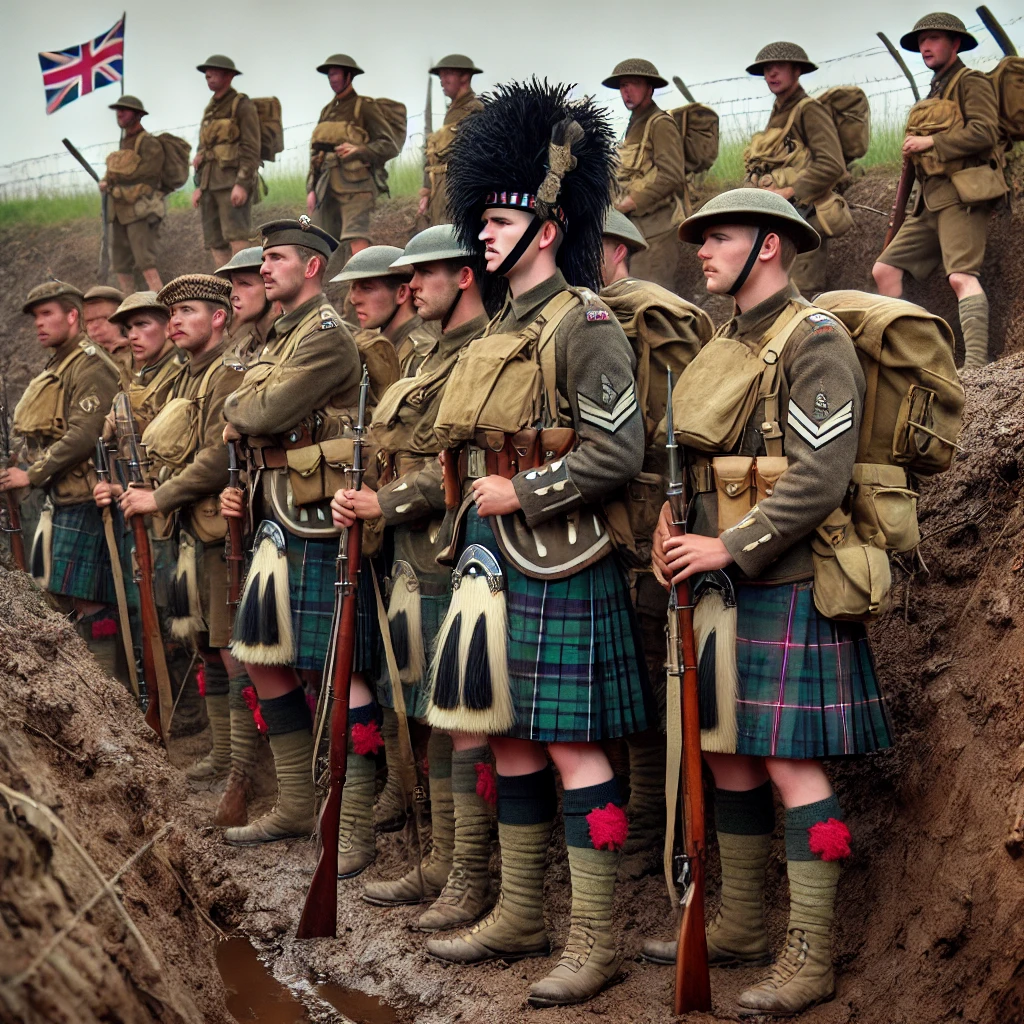
WW1 British Army Units: Legacy, Structure & The Iconic Black Watch Uniforms
Published on Mar 21, 2025
WW1 British Army Units: Legacy, Structure & The Iconic Black Watch Uniforms
introduction
The First World War was a defining moment in military history. Among the countless stories of bravery and endurance, the WW1 British Army units stand out for their courage and rich traditions and uniforms that have become heritage symbols. This article delves deep into these units ' structure, roles, and uniforms, particularly spotlighting the Black Watch and the Royal Highlanders.
Understanding WW1 British Army Structure
The British Army during WW1 was a well-organized force structured into different levels:
- Army: The highest unit under a General or Field Marshal
- Corps: Multiple divisions commanded by a Lieutenant-General
- Division: Roughly 12,000–20,000 soldiers, often the main fighting force
- Brigade: Comprising 3–4 battalions
- Battalion: The basic infantry unit, about 1,000 men strong
- Company, Platoon, and Section: Subdivisions within a battalion
This hierarchical structure allowed for efficient command and control across various battlefronts, from the trenches of the Western Front to the deserts of Mesopotamia.
The Role of British Army Units in WW1
Each British Army unit had a defined role, whether it was infantry, artillery, cavalry, engineers, or support corps like the Royal Army Medical Corps (RAMC) or Royal Army Service Corps (RASC). These units worked in unison, often under horrific conditions, to repel enemy forces and sustain prolonged offensives.
One of the most significant aspects was the reliance on regimental traditions, which fostered pride and loyalty among soldiers. This is especially evident in regiments like the Black Watch, a unit that carried its historical pride into the trenches.
The Black Watch: Scotland'sScotland's Iconic Regiment
Known as The Black Watch (Royal Highland Regiment), this unit dates back to the early 18th century. By WW1, the regiment had already carved a reputation for being one of Britain's most formidable infantry forces.
Black Watch in WW1:
- Fought in major battles such as Loos, Somme, and Ypres
- Distinguished themselves through bravery and resilience in trench warfare
- Suffered heavy casualties, earning widespread respect
Uniform Legacy:
The Black Watch uniform is instantly recognizable, featuring:
- Dark tartan kilts (Government No. 1 Tartan)
- Red hackles on feather bonnets
- Khaki service dress for trench warfare while maintaining regimental identity through the kilt
These uniforms were not just clothing but symbols of identity, honor, and history. Even today, the Black Watch tartan is one of the most iconic military patterns in the world.
Related Read: Check out our guide on Best Military Uniforms for more timeless designs.
Royal Highlanders: More Than Just Tradition
Often grouped with the Black Watch, the Royal Highlanders carried the same martial spirit. Their battlefield reputation was unmatched, and their dress uniform was just as distinguished.
Distinctive Features:
- Traditional Scottish kilt in regimental tartan
- Doublets, sporrans, and feather bonnets
- Transitioned to khaki and webbing gear in battle zones but retained elements of Highland pride
Whether in ceremonial dress or battlefield gear, the Royal Highlanders embodied the perfect blend of heritage and functionality.
Dive deeper into their attire on our Royal Highlanders page.
The Transition of Military Uniforms During WW1
At the start of WW1, British soldiers wore service dress uniforms designed during peacetime — not ideal for modern warfare. Bright buttons, leather boots, and stiff tunics must be adapted for muddy trenches and prolonged exposure to the elements.
Key Changes:
- Introduction of khaki as a standard color for camouflage
- Use of puttees for leg protection
- Helmets (like the Brodie helmet) replacing soft caps
- Webbing gear to carry ammunition and supplies
Despite the shift towards practicality, elite units like the Black Watch retained unique identifiers — such as tartan patterns and cap badges — that kept their spirit alive.
Why These Uniforms Still Matter Today
From re-enactors to collectors, the legacy of WW1 British Army uniforms endures. They symbolize courage, tradition, and the evolution of military strategy.
On websites like Paddelaters, you'llyou'll find curated collections that celebrate these uniforms, offering a tangible link to the past. For anyone passionate about Revolutionary War uniforms and historical attire, these collections are more than garments — they are stories woven in fabric.
SEO Recap: Why This Content Matters
This article aligns with user intent and search engine queries by targeting relevant keywords like WW1 British Army Units, Black Watch, and Royal Highlanders. Integrating your site's key pillar content — such as Revolutionary War Uniforms — helps improve domain relevance and internal linking structure for better SEO.
Conclusion
The legacy of WW1 British Army units lives on through their battlefield achievements and the iconic uniforms they wore. Regiments like the Black Watch and the Royal Highlanders remind us of the valor and sacrifice etched into military history. Their uniforms — now preserved, studied, and celebrated — are enduring symbols of pride and identity.
